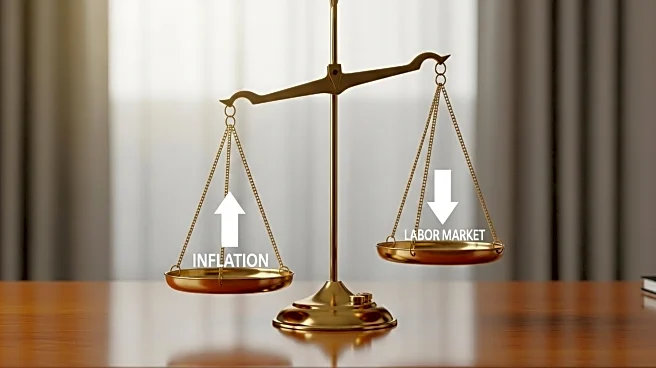What's Happening?
Canada's main stock index, the S&P/TSX composite index, experienced a decline of 0.5% on Monday, ending a week-long rally. This downturn comes as investors anticipate a potential interest rate cut by the Bank of Canada later this month. The likelihood of a rate cut increased following the release of data showing a loss of 65,500 jobs in August, raising the unemployment rate to 7.1%. Money markets are currently predicting a 92% chance of a 25 basis-point rate cut on September 17. The Bank of Canada has maintained a steady rate of 2.75% over its last three meetings since March. Additionally, investors are also expecting a rate cut from the U.S. Federal Reserve, following a report indicating a weakening U.S. labor market.
Why It's Important?
The anticipated rate cut by the Bank of Canada is significant as it reflects the broader economic challenges facing the country, including job losses and rising unemployment. A rate cut could stimulate economic activity by making borrowing cheaper, potentially boosting consumer spending and investment. However, it also signals concerns about the health of the economy. The potential rate cut by the U.S. Federal Reserve further underscores global economic uncertainties, as both countries grapple with slowing labor markets. These developments could have wide-ranging impacts on industries reliant on consumer spending and investment, as well as on financial markets that are sensitive to interest rate changes.
What's Next?
The Bank of Canada's decision on interest rates is expected on September 17, and market participants will be closely watching for any announcements. A rate cut could lead to increased borrowing and spending, potentially aiding economic recovery. However, it may also raise concerns about inflation and the long-term sustainability of economic growth. Stakeholders, including businesses and policymakers, will need to consider these factors as they plan for the future. Additionally, the U.S. Federal Reserve's actions will be closely monitored, as they could influence global economic trends and investor sentiment.











